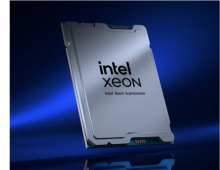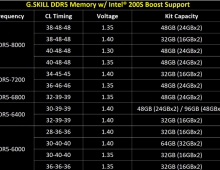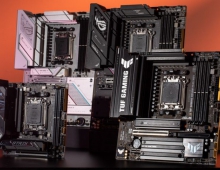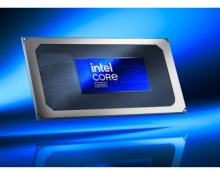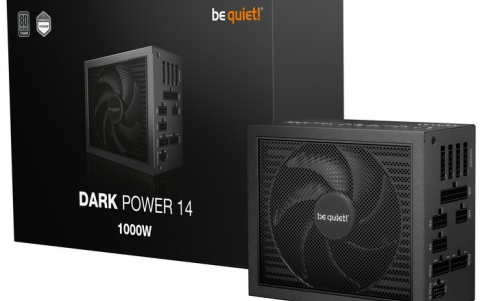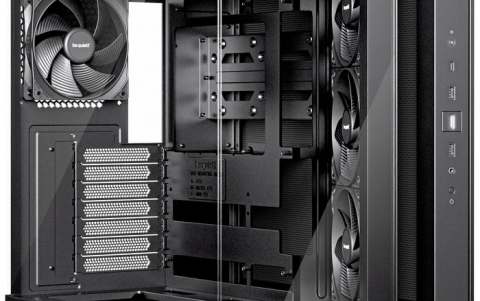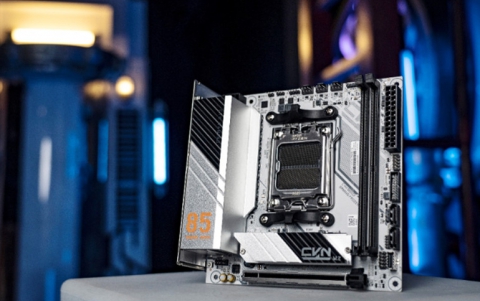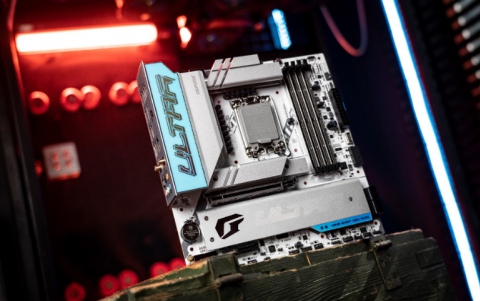Intel Q9300 Quad-core
6. Benchmarks - MAXON CINEBENCH, x264 HD Benchmark, TMPGEnc 4 Xpress
Review Pages
2. Retail package, installation
3. Test Configuration
4. Benchmarks - Everest Ultimate Edition, SiSoftware Sandra
5. Benchmarks - PCMark Vantage, SYSmark 2007 Preview
6. Benchmarks - MAXON CINEBENCH, x264 HD Benchmark, TMPGEnc 4 Xpress
7. Benchmarks - SuperPI, wPrime
8. Benchmarks - 3DMark06
9. Benchmarks - Overclocking
10. Final words
 MAXON CINEBENCH is based on MAXON's award-winning animation software, CINEMA 4D, which
is used by studios and production houses worldwide for 3D
content creation.
MAXON CINEBENCH is based on MAXON's award-winning animation software, CINEMA 4D, which
is used by studios and production houses worldwide for 3D
content creation.
MAXON CINEBENCH runs several tests on your computer to measure the performance of the main processor and the graphics card under real world circumstances. The benchmark application makes use of up to 16 CPUs or CPU cores and is available for Windows (32-bit and 64-Bit) and Macintosh (PPC and Intel-based). The resulting values among different operating systems are 100% comparable and therefore very useful with regard to purchasing decision-making.

The CineBench R10 benchmark uses all four cores of Intel Q9300 and therefor, it can render the test image almost two times faster. When it uses a single core, both cpus seems to perform the same.
- x264 HD Benchmark
x264 Benchmark utilizes the next generation of Video Encoding benchmarks with support for x264 codec that is considered to be one of the most demanding for Video applications. Simply put, it is a reproducible measure of fast your machine can encode a short, HD video clip to a high quality x264 video file. It's nice because everyone running it will use the identical video clip and software. The video encoder (x264.exe) reports a fairly accurate internal benchmark (frames per second) for each pass of the video encode and it also uses multi-core processors very efficiently. All these factors make this an ideal benchmark to compare different processors and systems to each other.
The benchmark procedure is very simple, you just run a batch file that encodes the same file four times. The software provides two results, one for each pass of encoding. The average performance of this test is available in the charts below.

The x264 HD benchmark uses the 100% of the cpu. As a result, the the Intel Q9300 is almost two times faster than the E6750.
- TMPGEnc 4 Xpress
With MPEGEncoder, the overall encoding time will be reduced as CPU speed gets faster. TMPGEnc converts *.AVI files to MPEG1, the format which is used in VideoCDs. Using a variety of options in TMPGEnc, you can compress your video file in high quality. TMPGEnc enables you to adjust bitrate, quantize matrix, GOP structure, interlacing and many other parameters so that you can create the most appropriate movie file depending on your needs.
For our test we use an AVI file around 350MB encoded with the Xvid (Mpeg4 ASP) codec. We use the build-in Mpeg4 ASP/AVC MediaEncoder profile and by dividing the amount of total frames via the encoding time, we get the average frame/sec speed of each processor.
With TMPGEnc 4 Xpress we can see some interesting results. With ASP encoding, the performance difference is not that big, since ASP encoding doesn't quite use all four cores of the Q9300 processor. However when we selected the AVC profile, we got a significant performance boost from the Intel Q9300, big enough to justify its high retail price.
Review Pages
2. Retail package, installation
3. Test Configuration
4. Benchmarks - Everest Ultimate Edition, SiSoftware Sandra
5. Benchmarks - PCMark Vantage, SYSmark 2007 Preview
6. Benchmarks - MAXON CINEBENCH, x264 HD Benchmark, TMPGEnc 4 Xpress
7. Benchmarks - SuperPI, wPrime
8. Benchmarks - 3DMark06
9. Benchmarks - Overclocking
10. Final words




